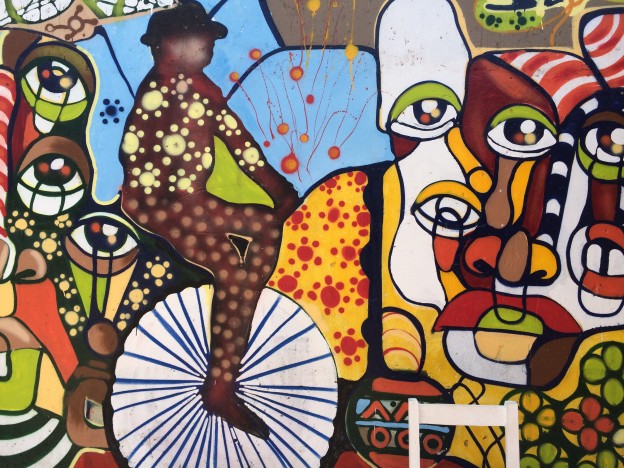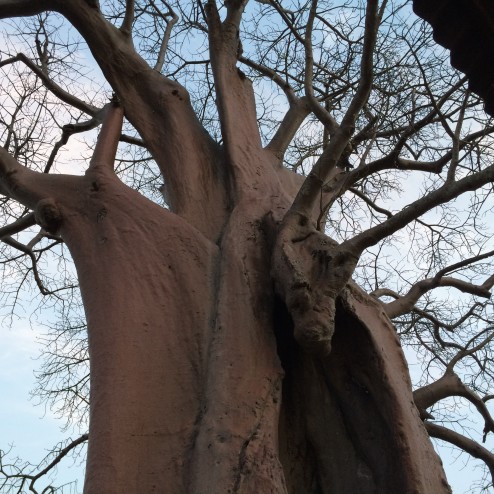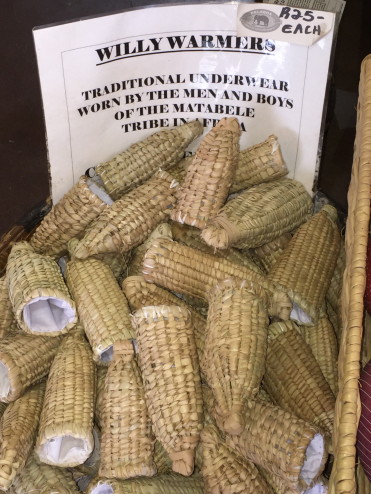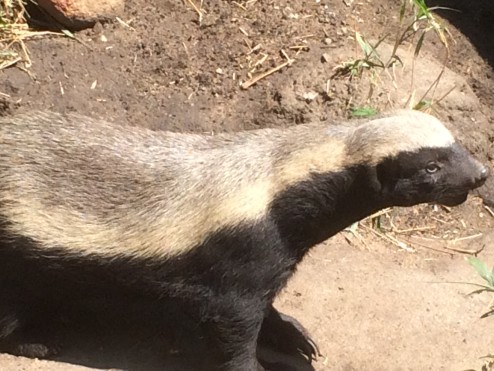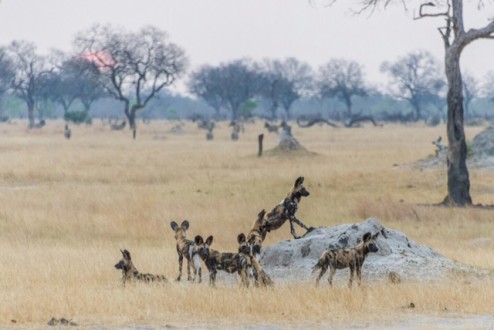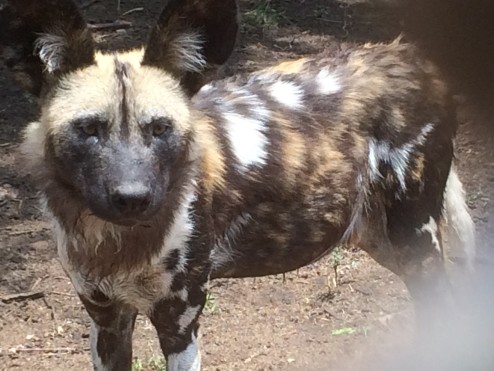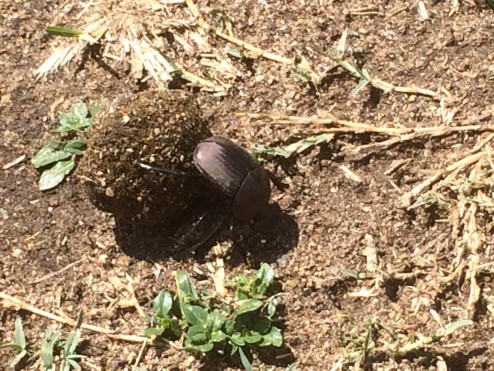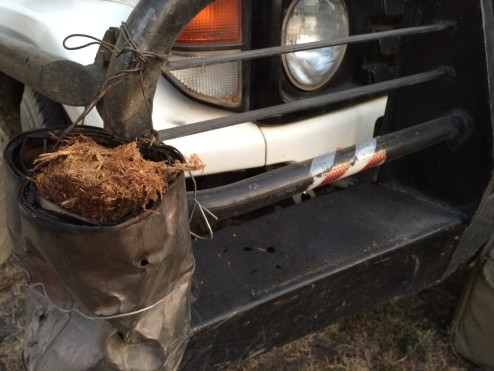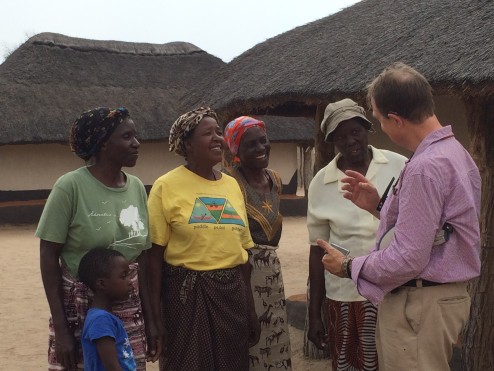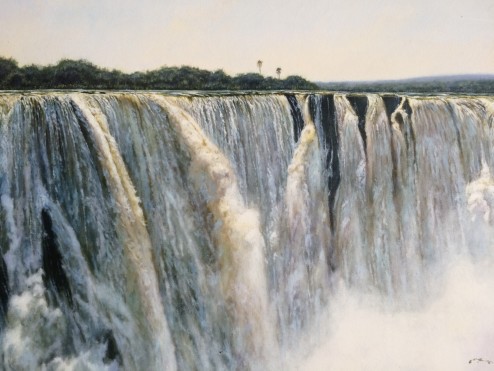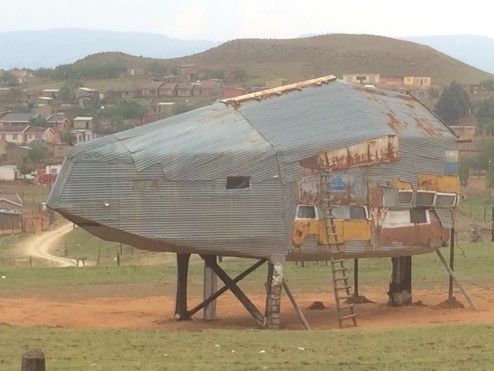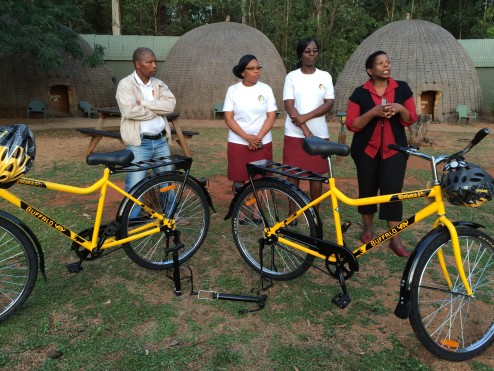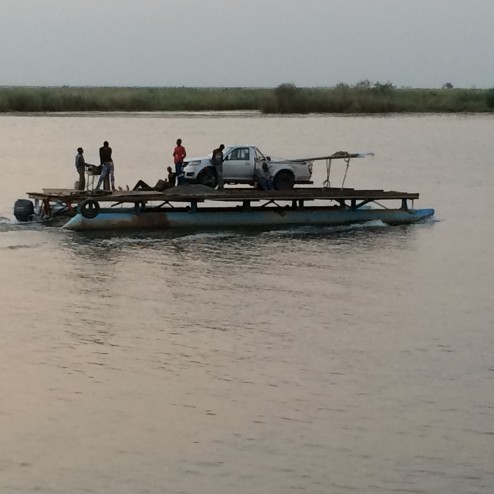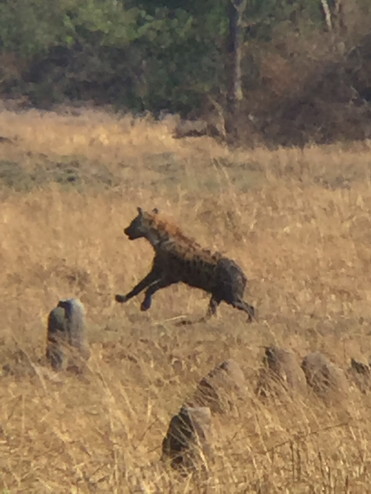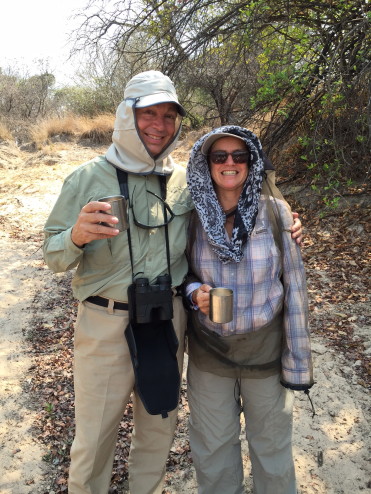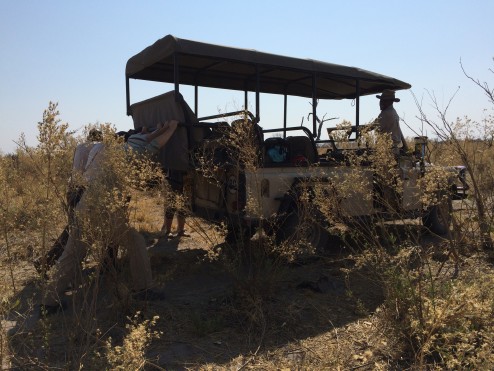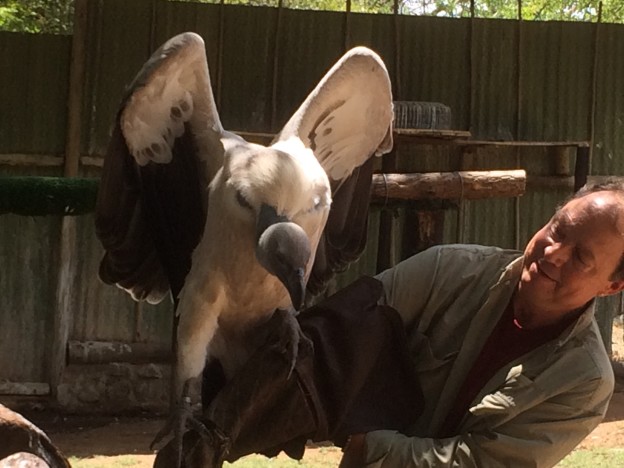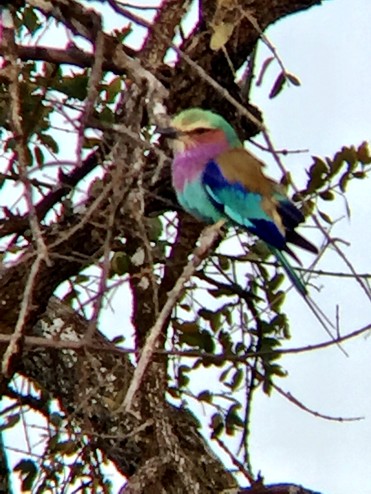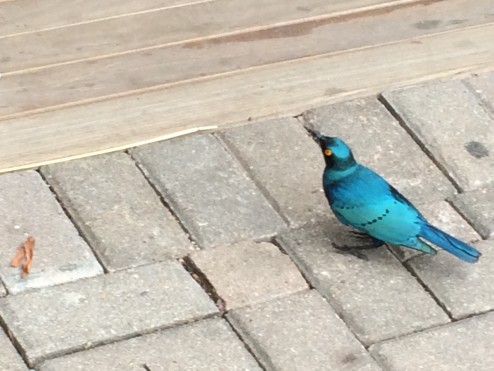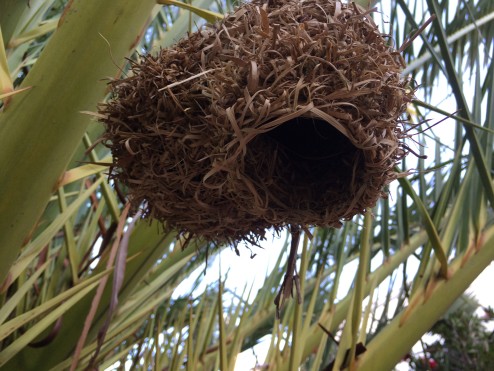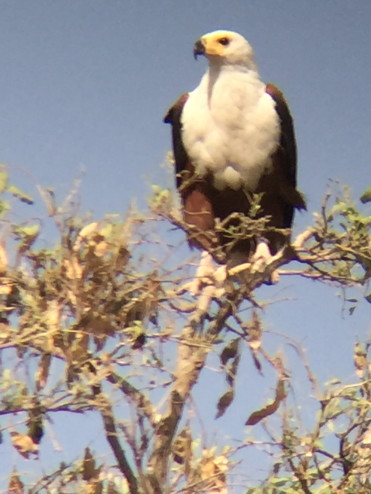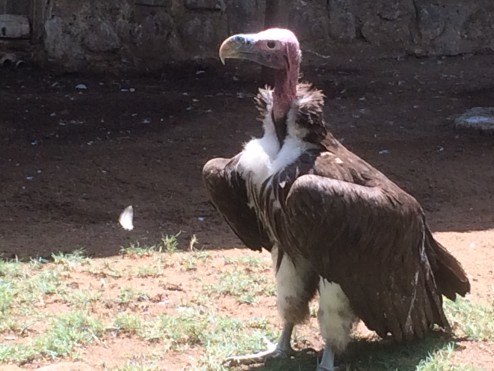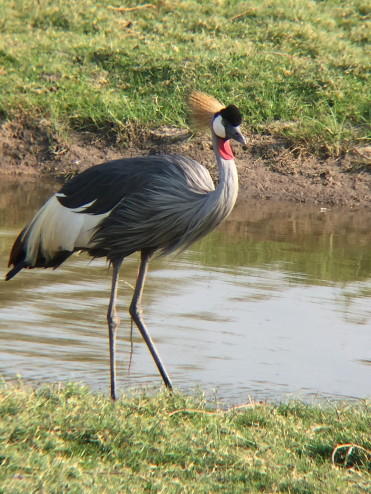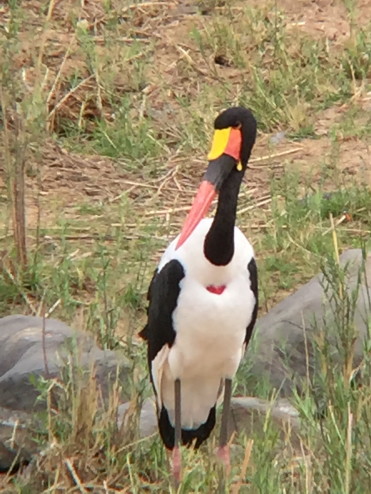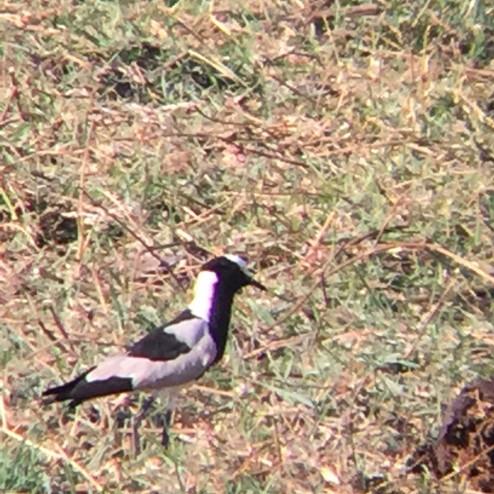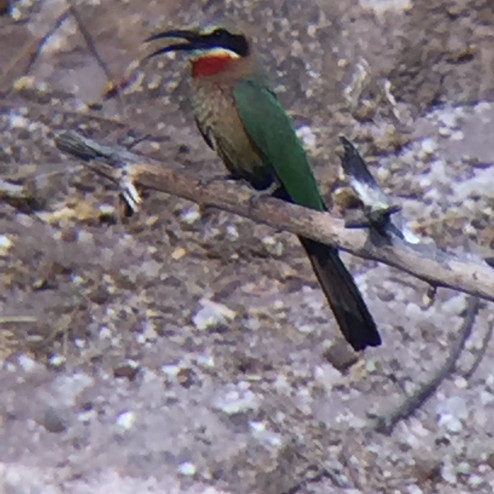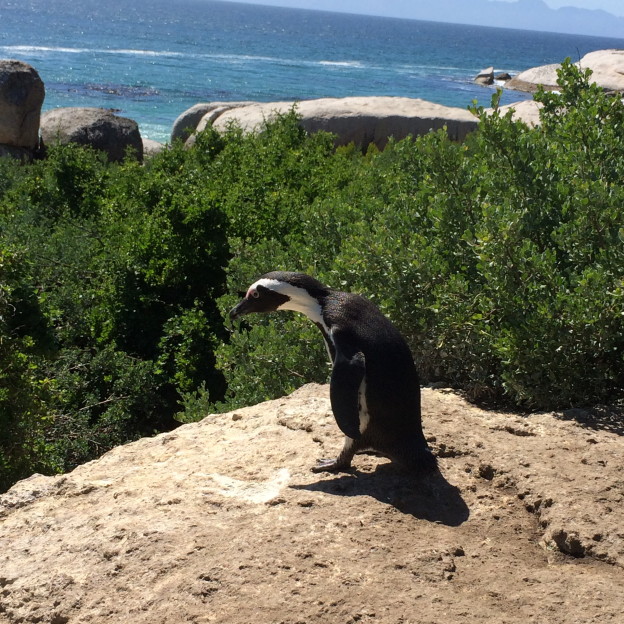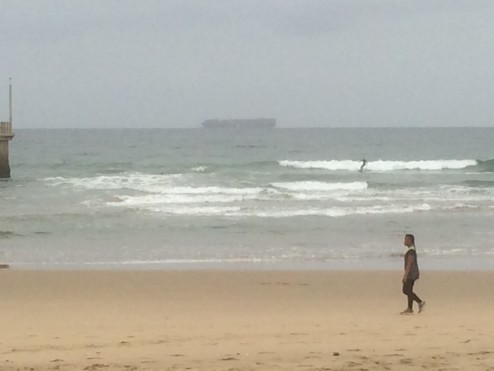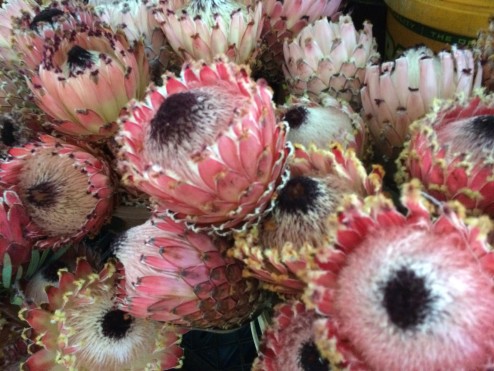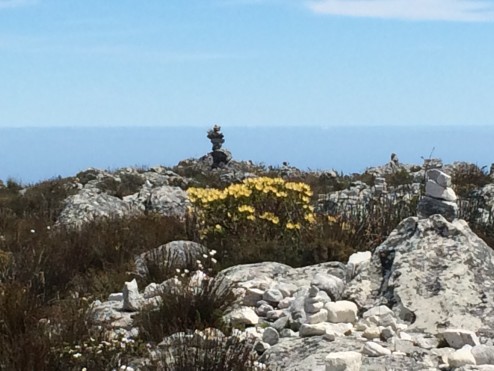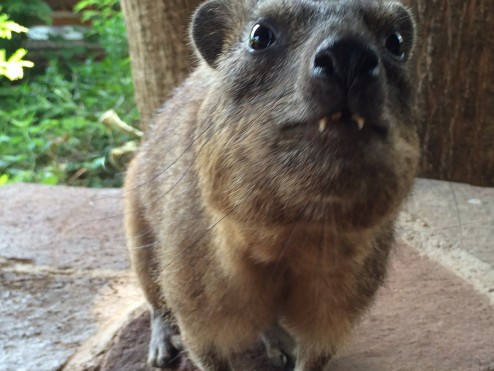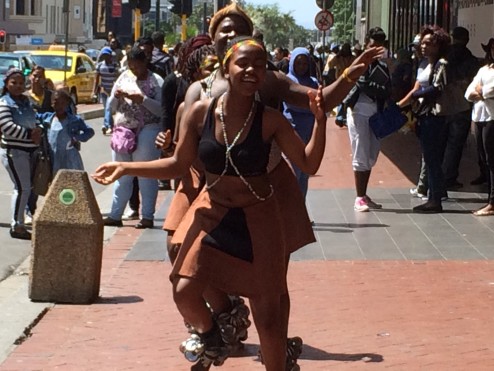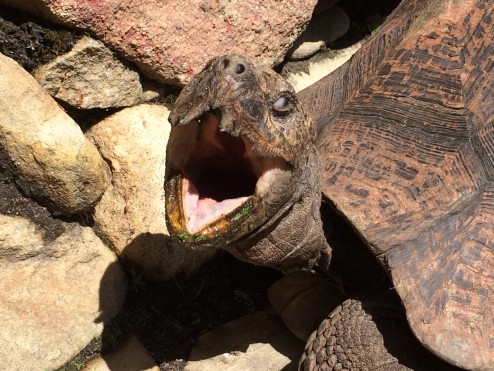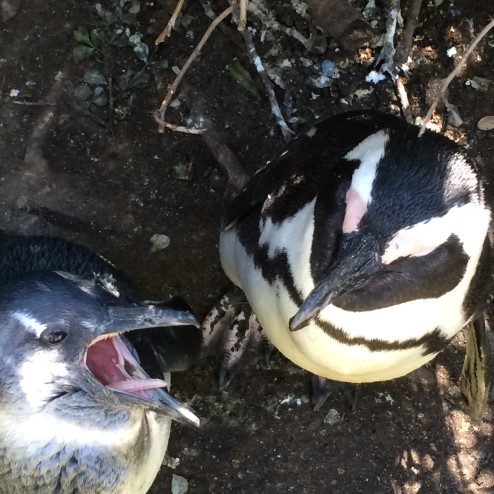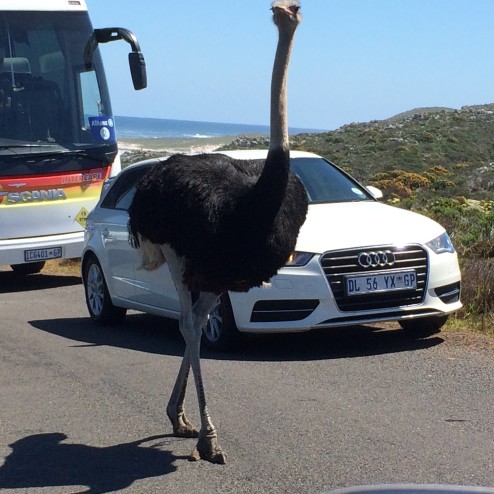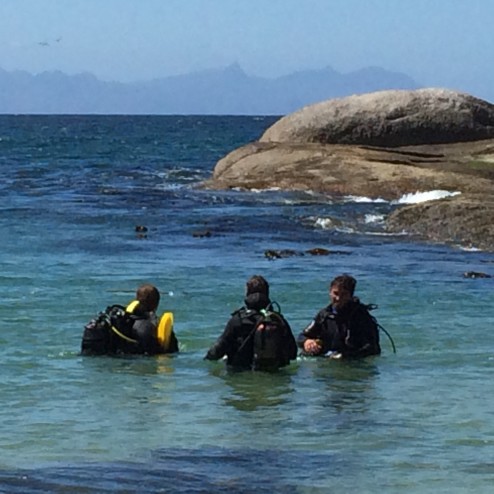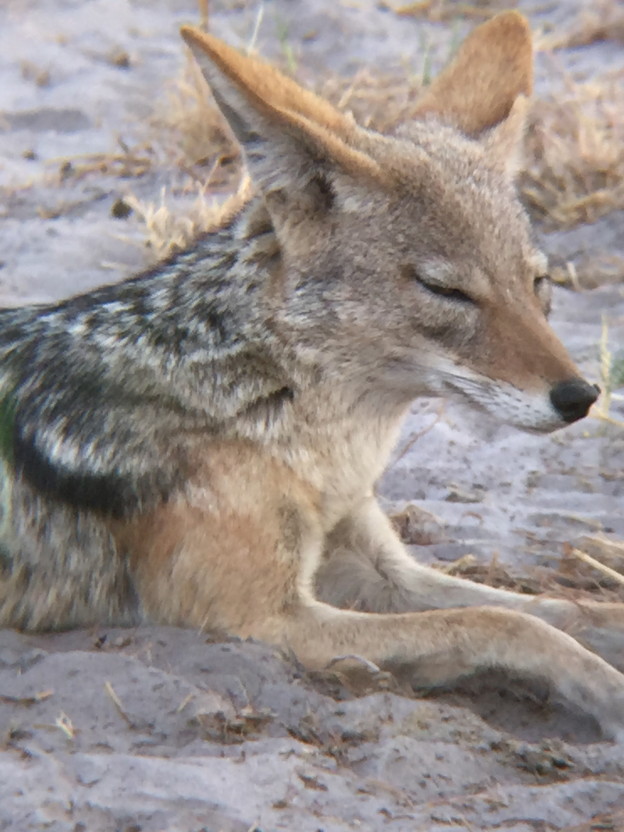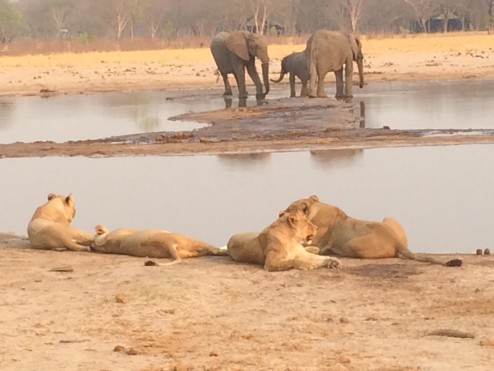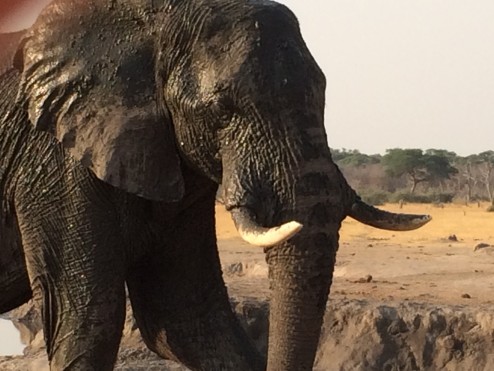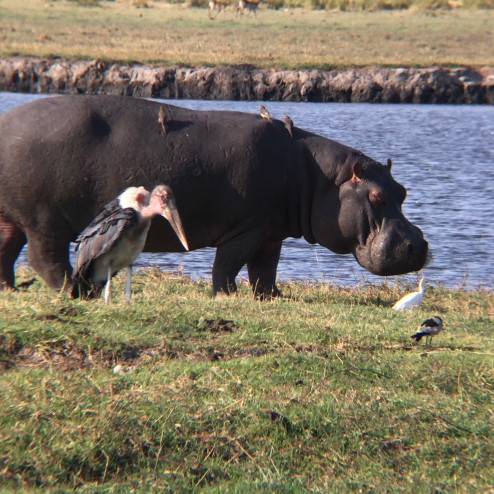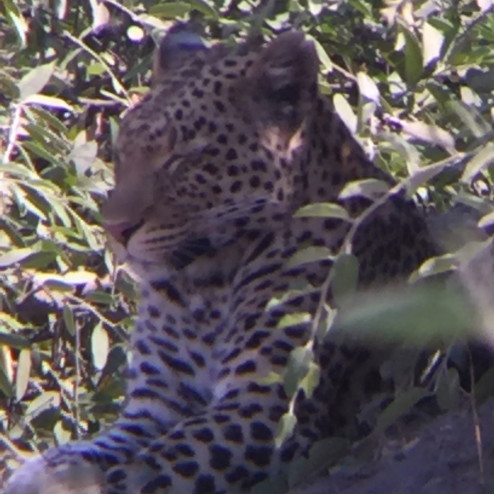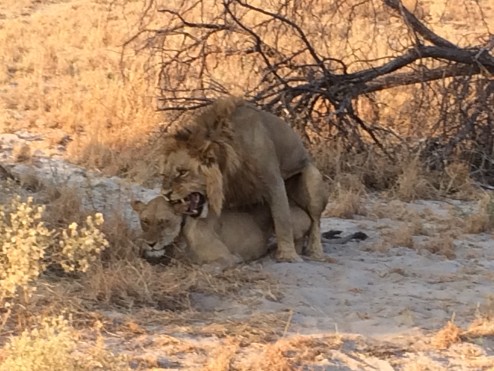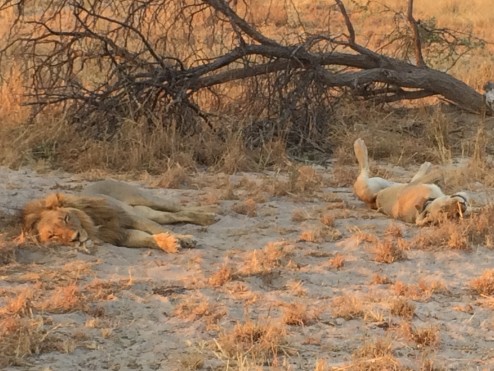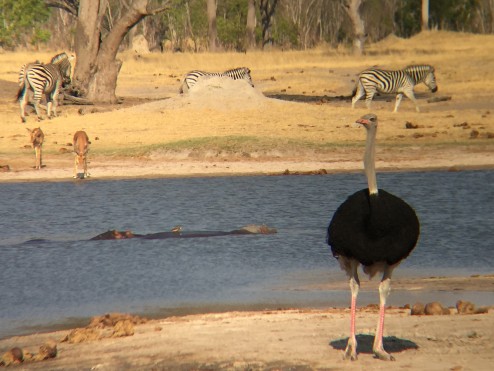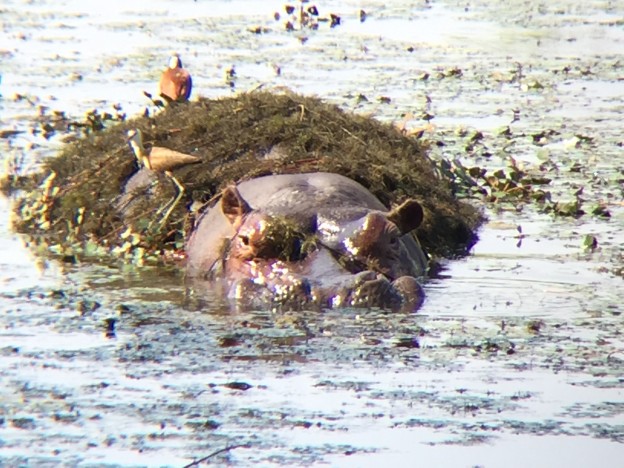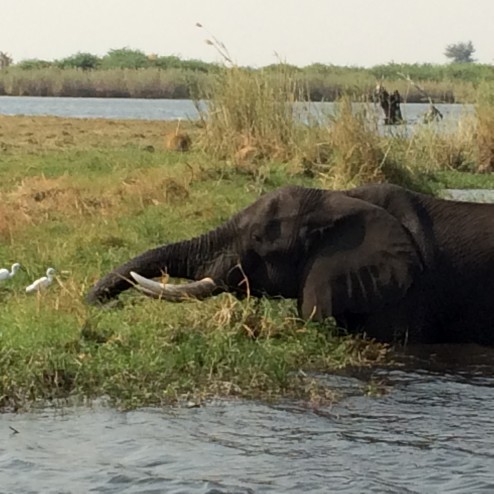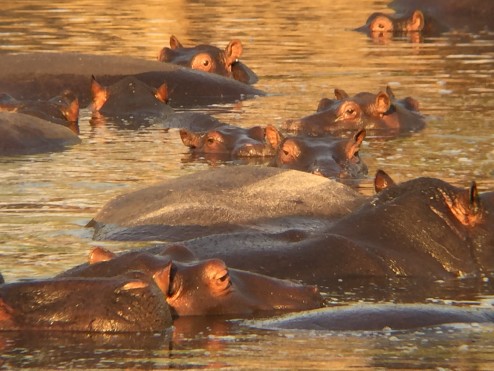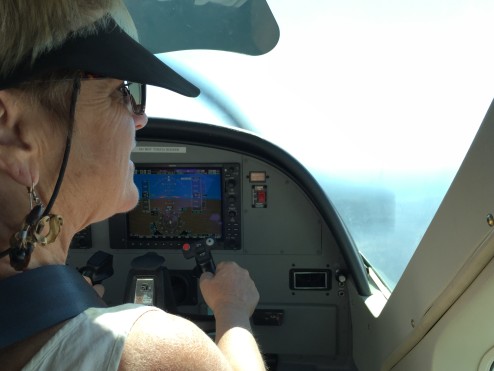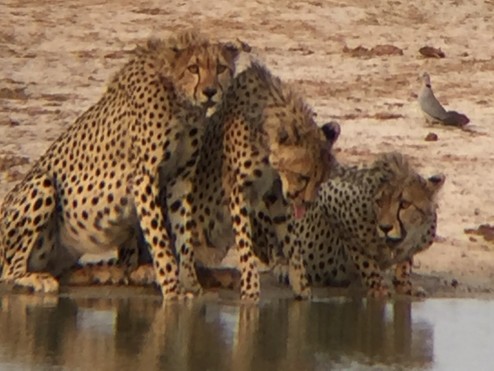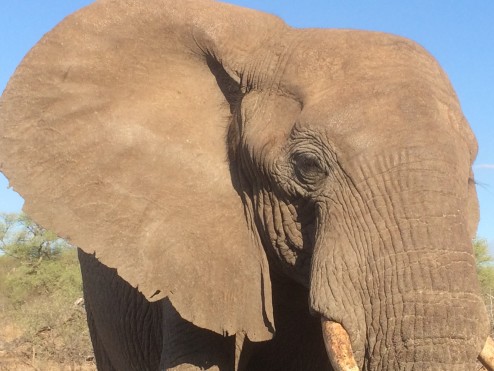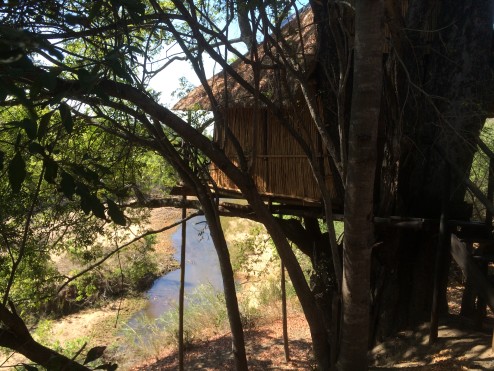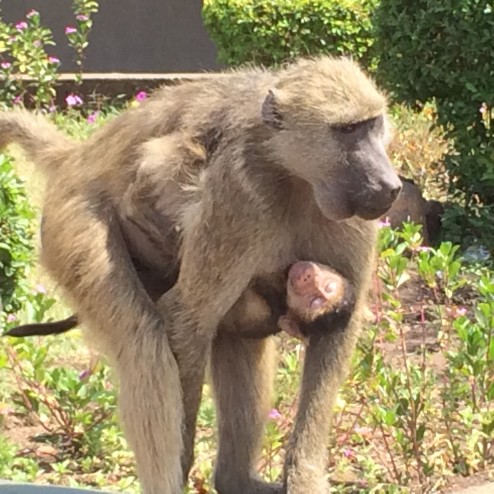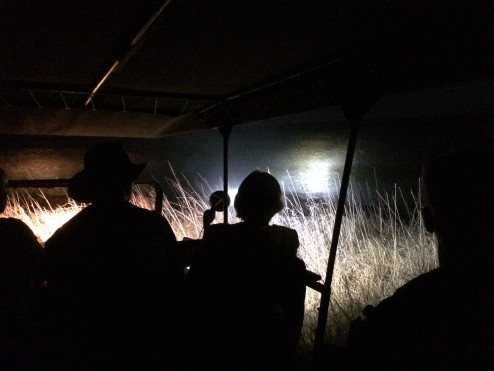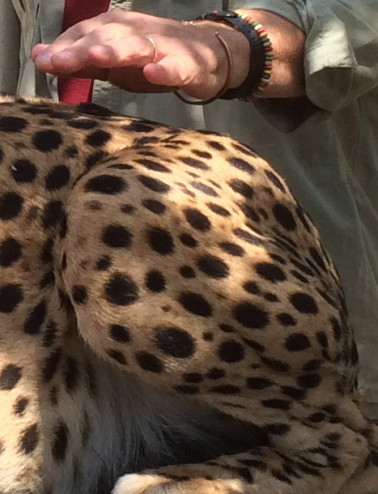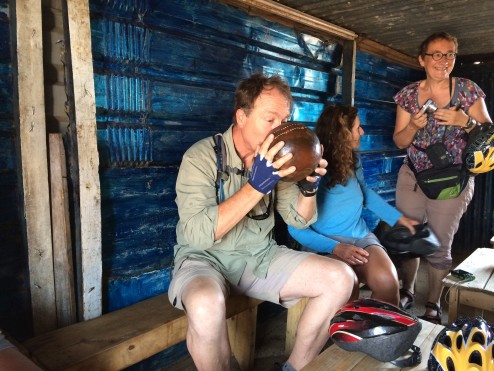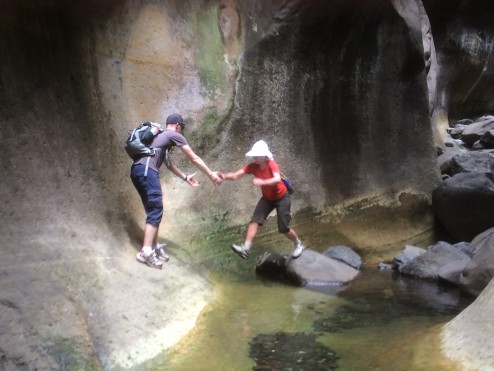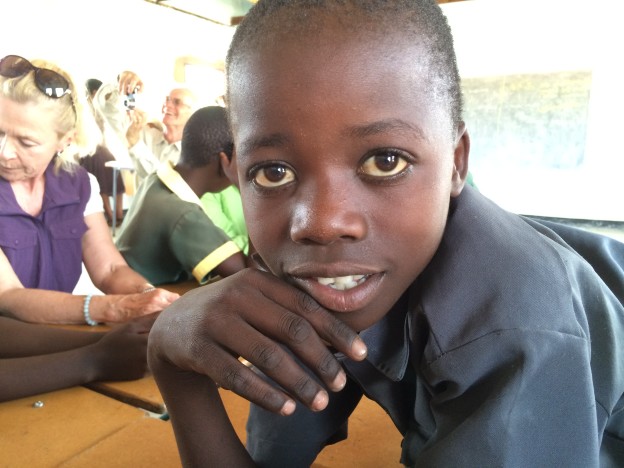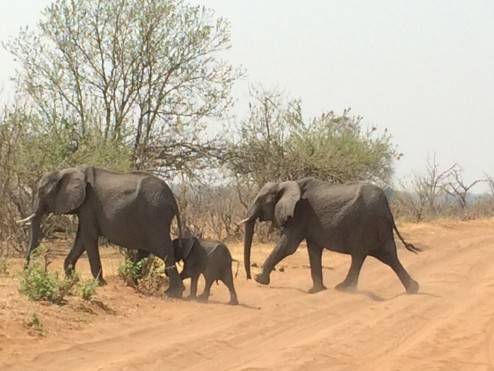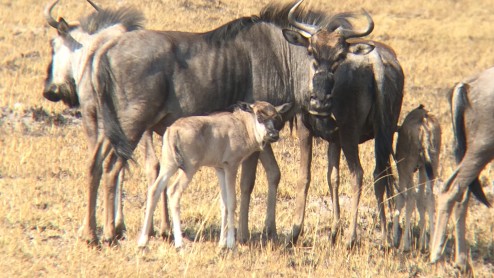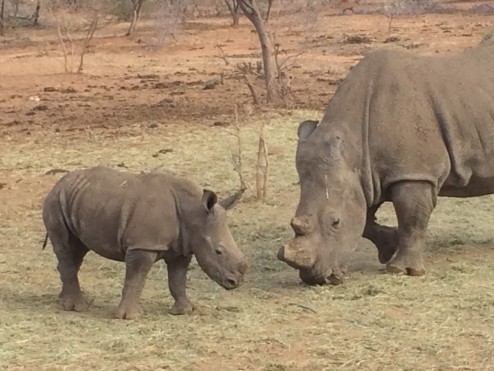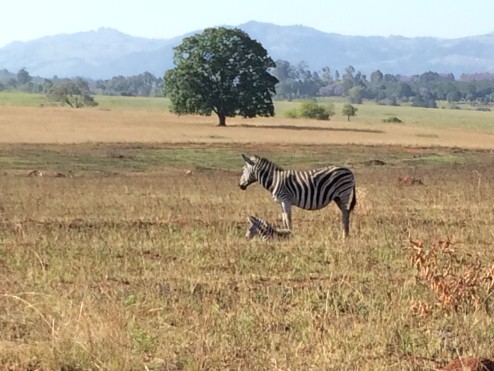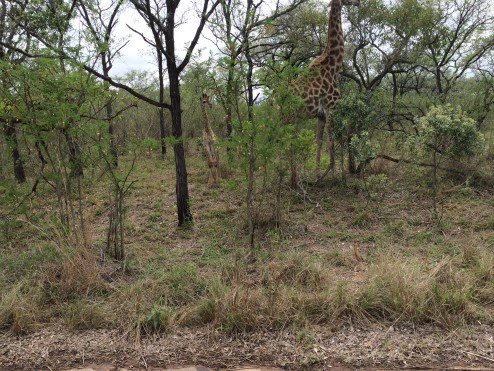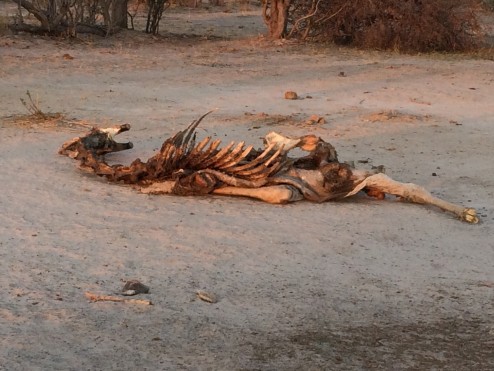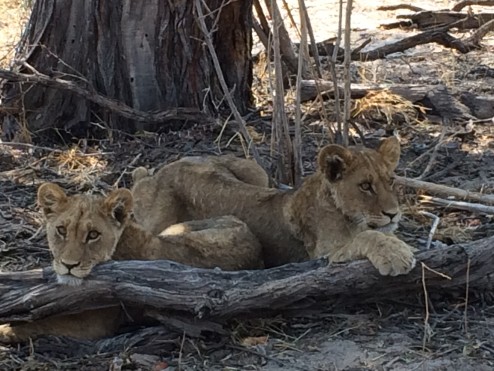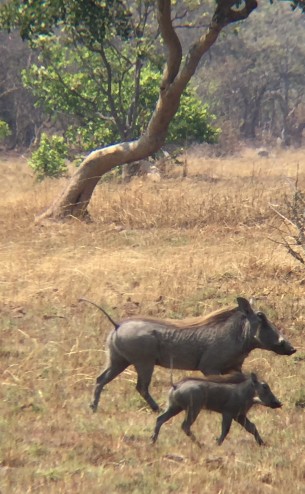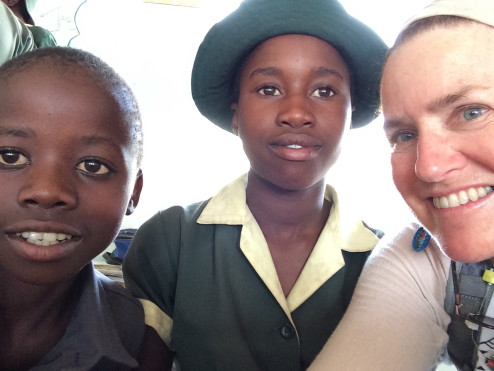Bloggers are usually looking for themes to organize travel stories, that go beyond “Place”. So, we pondered where to tuck the beautiful and ancient baobab trees we first learned of as children in Antoine de Saint-Exupery’s ‘The Little Prince’. “Trees as big as castles”, says the Aviator…with roots so massive they can split apart the Little Prince’s tiny planet. Yes, the baobabs in Africa did compel us to reread that lovely and wise novella.
When cool things are too diverse but we just have to share them, we admit defeat and present an oleo without a unifying principle, except to delight. The honey badger (below… a fierce carnivore with huge claws, that can get to anything that burrows underground) was a great find. The most rare and endangered animal spotted was a Bat-Eared Fox. Unfortunately we have no good photo because, like many of the shyer and faster wild animals, he surprised us when he bolted from hiding.
Painted Dogs (below) are also endangered because the locals kill them like stray dogs, but they are unique to this area.
Huge round ears and a mottled coat make them “undoglike”, but their faces and intelligent eyes say canine, as does their pack mentality.
Dung rolling beetles are scarabs that roll elephant dung 20 times their body weight….even up steep inclines.
Elephant dung burning in cans at the front of the game vehicles kept the tse tse flies in Zambia away. It was really effective as we knew immediately when the dung was burned up: nasty bites and annoyance continued until the guide stuffed and relit the can.
Steven charmed the headman’s 4 wives during our visit to their boma. They kept telling me how lucky I was while making sexually suggestive gestures! With only 4 years of marriage they see us as newlyweds… just like we do.
Victoria Falls produces so much mist that a humid rain forest sprouts out of an otherwise dry northern environment…and it was the first place we needed to start our anti-malaria medications.
Outside Durban, South Africa on a hilly bike ride, we found this structure made out of VW buses and galvanized metal. This is definitely the biggest piece of folk art we found in Africa. It reminded us of all the weird and wonderful animals we have seen in Southern Africa.
Our biking group donated one of these bikes and the bike tour company the other. They will be used by “Mentor Mothers” (the women in red skirts), HIV+ mothers, employed by the organization, MOTHERS TO MOTHERS, who provide follow-up, care, and education to pregnant and parenting HIV+ women. The stigma for women with HIV+ status is still enormous even though 90% of the transmission of HIV/AIDS in Africa is from straight men consorting with prostitutes…and passing it on to their unsuspecting families. Many women don’t get tested or don’t return for treatment once they learn that they are HIV+. Nursing mothers pass the virus on to their infants thus the need for early intervention. We also visited a school/convent/orphanage in Durban that helps provide for children orphaned by parental illness or death by the AIDS virus. Note the traditional “Beehive” huts where we stayed in this private game reserve. Dark inside, but amazingly insulated against the heat.
This “car ferry” on the Chobe River worried us a bit. Even one little wave could flip it as the front pontoon was already deeply buried in the river; we wondered if they ever considered centering the vehicle on the tiny barge, instead of placing it directly over the buried pontoon.
We saw hyenas well camouflaged in the shade but finally got a picture of their goofy looking run.
Arrayed in our finest safari gear, designed to keep the sun, skeeters, and tse tse flies away, we strut our stuff at a midmorning tea break during a game walk (with armed guard) in Hwange NP Zimbabwe.
Later that day, we had to get out and push the game drive vehicle up a rise so we could jump start it. We welcomed both the armed guard and the exercise as each tea stop was accompanied by homemade shortbread. We are sorry we didn’t include Namibia in this trip. We will just have to come back after hearing so many guides and travelers rave. But not for awhile. Sal is enjoying staying put at home this Winter except for short road trips to the Pacific Northwest, while the paripatetic Steven nails down final details on a scuba trip to the Philippine Islands and Indonesia.

